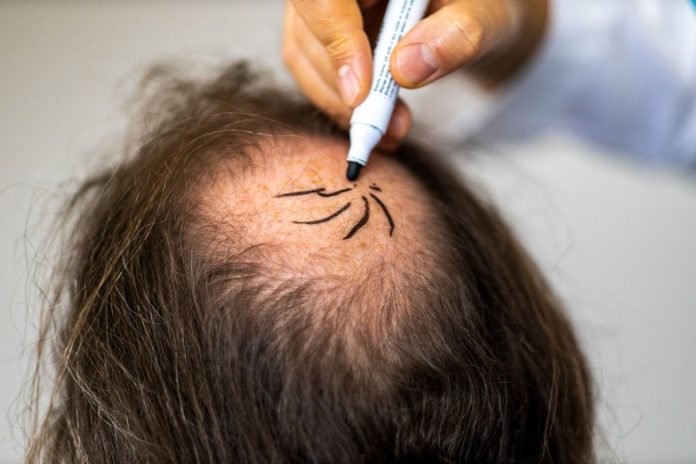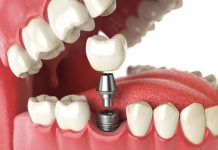Many of you have thought about getting a hair transplant. Even now, after some time, you still weigh the pros and cons of the procedure.
You might be confused even after reading and asking questions. This is likely due to myths you’ve heard or read.
Cosmetic surgeries and procedures help millions of people around the world. They want to enhance their looks and boost their confidence.
Some people get these procedures done to seem better than they currently do, while others choose them to hide flaws that would otherwise make them appear less attractive. Hair loss or falling is one such flaw that people try to hide through cosmetic procedures.
The cosmetic procedure that helps these people is a hair transplant, but sadly, it is fraught with many myths. Let’s dispel a few of these myths so you can see how this procedure can help if you’re losing hair.
1. Only those with Large Incomes can Purchase it.
There are various hair transplant facts and fallacies to take into consideration, despite the widespread misconception that hair transplants are exclusively for the wealthy. But this is not accurate.
Hair restoration procedures such as follicle unit extraction (FUE) and transplantation (FUT) come at a reasonable price. Moreover, hair transplant surgeries usually have a one-time fee due to the nearly permanent results.
To put it another way, people who are already shelling out a lot of money for alternatives and semi-permanent procedures should think about getting hair transplants.
2. Hair Replacements Seem Artificial.
The best hair surgeon takes great pride in the painstaking care they put into every hair transplant procedure. The hair doctors use extremely innovative, consistently effective techniques to achieve successful results.
See also: 6 Simple Adjustments That Even a First-Time Homebuyer Can Your new hair should resemble your old hair once it has grown in. Hundreds of before-and-after photos show you the incredible results you can expect.
Using any hair transplantation technique, skilled surgeons select the optimal angle, spot, and distribution for the transplanted hair.
When used correctly, these qualities help you achieve the perfect look and give you hair that will naturally grow in the direction you want it to.
Furthermore, because the transplanted hairs only come from donor spots on the patient’s own body or scalp, they won’t look strange or out of place.
The newly formed follicles will gradually blend in with your existing hair and start to grow on their own.
3. The Transplanted Hair Requires Special Attention.
The false assertion that transplanted hairs require special care is another common misperception about hair restoration procedures.
On the other hand, hair follicles are permanent and don’t require special attention until three weeks after the procedure.
Using any kind of shampoo, conditioner, product, or even hair color will have the same effects as leaving the hair untreated. You can apply any cut or style to the hair.
Are there any requirements for recuperating? It’s possible that your scalp is sore and will require some basic therapy while it heals. Most people, though, can return to their normal activities.
A few weeks following your procedure, the transplanted hair will fall out, allowing the follicles to begin producing new, healthy hair. Patients may expect new growth after just a few months.
Also, check out: A Synopsis of the Top 7 Natural Health Products
4. An Elderly Person Shouldn’t Undergo a Hair Transplant.
Successful hair transplants are more likely to occur in older patients. Early life experiences unexpected patterns of hair loss, raising the possibility of severe future hair loss. But age doesn’t really matter when determining whether to get a hair transplant.
A skilled surgeon will thoroughly inspect the donor area, assess whether you are a candidate for the procedure or not, and determine whether or not new hair will grow in your scalp after the procedure and whether or not it will resemble the texture and quality of your natural hair.
5. You are Unable to Wash your Hair After the Procedure.
The day after your procedure, you can shampoo and clean your scalp; this won’t prevent the growth of your newly grown hair. Contrary to popular belief, cleaning the treated area as directed by hair doctor is safe.
6. Hair Transplants are Exclusively for Males.
Male-pattern baldness is not the only condition that hair restoration techniques can treat. You can also use them to treat other types of baldness.
The truth is that balding differs between men and women, and hair restoration treatments like follicular unit transplantation (FUT) and follicular unit extraction (FUE) can help both sexes.
The best candidates for hair transplant procedures are those with common male or female pattern baldness.
Men tend to have bald spots in the front or back of their heads, whereas women experience hair loss differently and tend towards diffuse thinning.
7. Be Prepared to Take Prescription Drugs to Promote Hair Growth.
Because transplanted hair is permanent, you won’t need to take any additional actions to encourage hair growth following the procedure. Therefore, you won’t need any specific drugs, shampoos, or creams.





